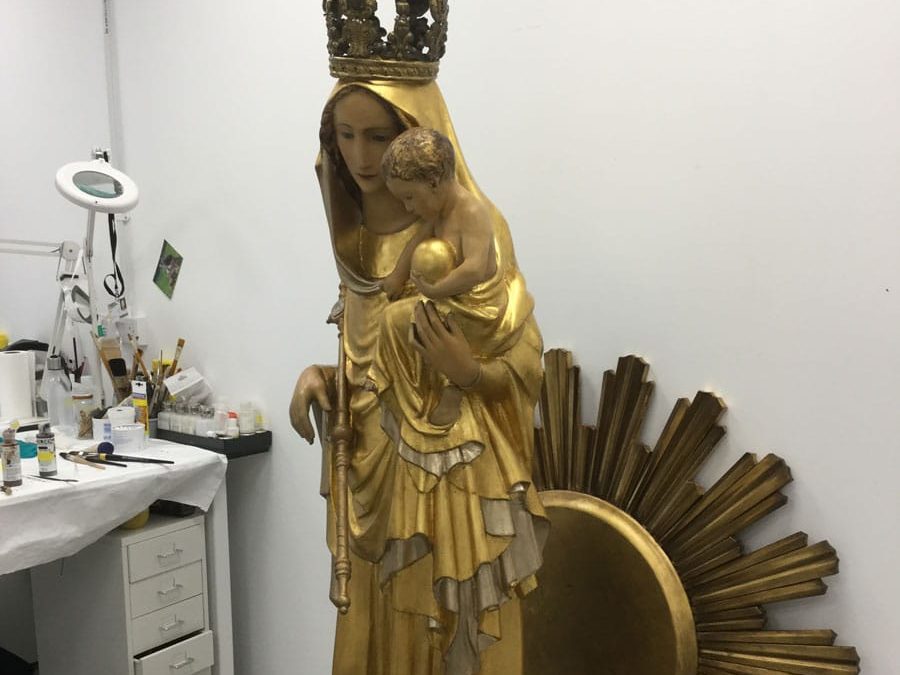The carved and gilded wooden figural statue, Our Lady of Peace, was designed in 1920 by the artist Martin Travers for St Mary’s Church in Belgravia to mark the end of the First World War.
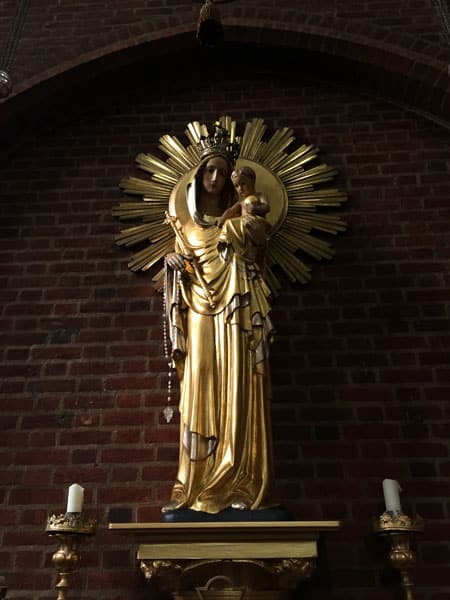
The statue of Our Lady of Peace has resided in the chapel of Seven Sorrows since 1927
Renowned for his Baroque style, Travers constructed devotional works for various churches, and was notable for his use of affordable materials to ensure that his work remained within the financial reach of places of worship. The use of these materials makes Travers’ works particularly susceptible to age-related disintegration and periodic conservation is usually required to ensure that structural and surface stability.
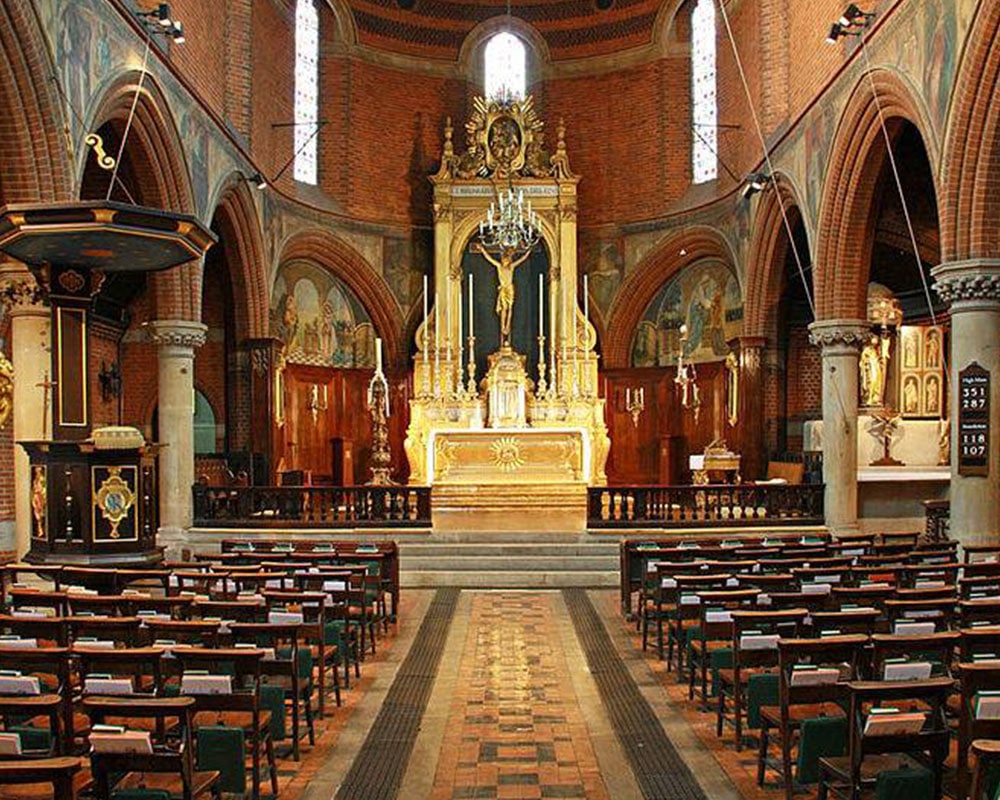
The impressive interior of St Mary’s Church, Belgravia
Conserving the sculpture of Our Lady of Peace to ensure its structural and surface integrity is particularly important because the work is regularly handled to facilitate the placement (and subsequent removal) of a detachable crown for certain religious celebrations.
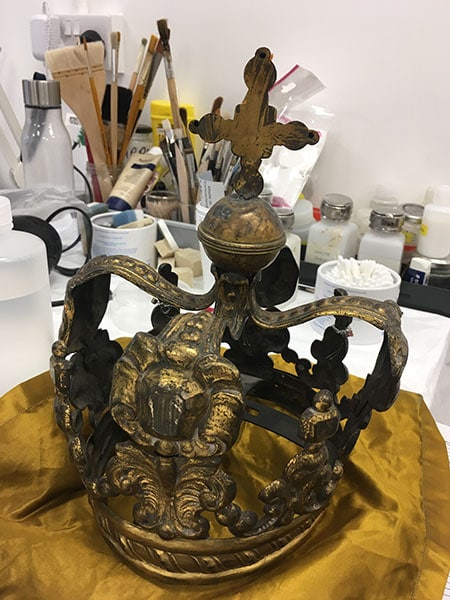
The detachable crown, which is worn by Our Lady of Peace for certain religious celebrations, pictured in the Plowden & Smith studio
As with many historic buildings, the environment of a church can pose a unique set of challenges for artworks. Fluctuations in humidity and temperature, potential for damp, the use of candles and oils in services and the impact of pests can lead to a whole host of conservation issues. Many years of candle soot, layers of varnish, and previous repairs had left Our Lady of Peace in need of conservation care.
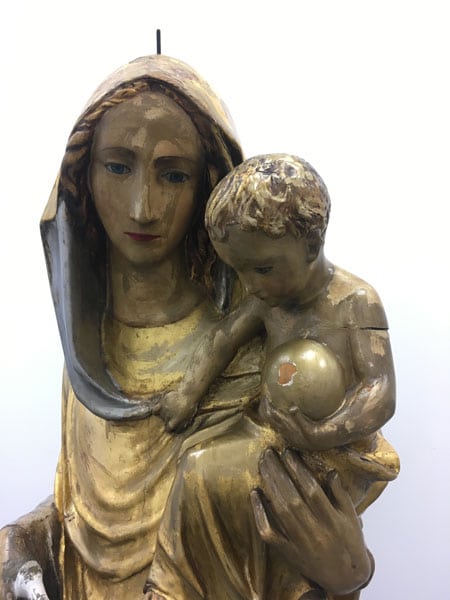
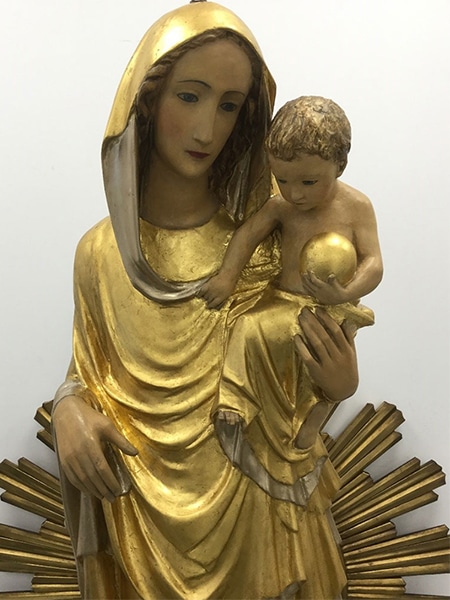
The Our Lady of Peace statue showing many years of candle soot, historic varnish and previous repairs (left), and following restoration and conservation treatment (right)
In 2019 following a site visit by the art restoration and conservation company Plowden & Smith, the statue was deinstalled and transported to their South London studio for treatment.
Restoring the Broken Finger of the Statue
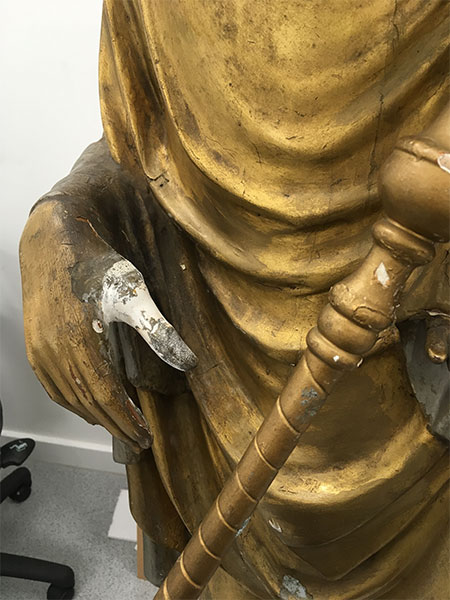
The most obvious area requiring restoration was the detached thumb of Our Lady of Peace
The most obvious area of damage was the detached thumb on the Virgin Mary’s right hand. Despite the majority of the figure being made from wood, it became apparent on close inspection that certain parts – such as the hand – were made from plaster.
Thankfully, the broken plaster thumb had been retained and therefore our decorative arts conservator Liisa Vesa could carefully bond the thumb back into place using polyester resin.
Polyester resin is a bonding agent specifically used to adhere and fill losses in the break simultaneously. The surface of the join was then carefully filled in to provide additional support and to ensure a seamless repair.
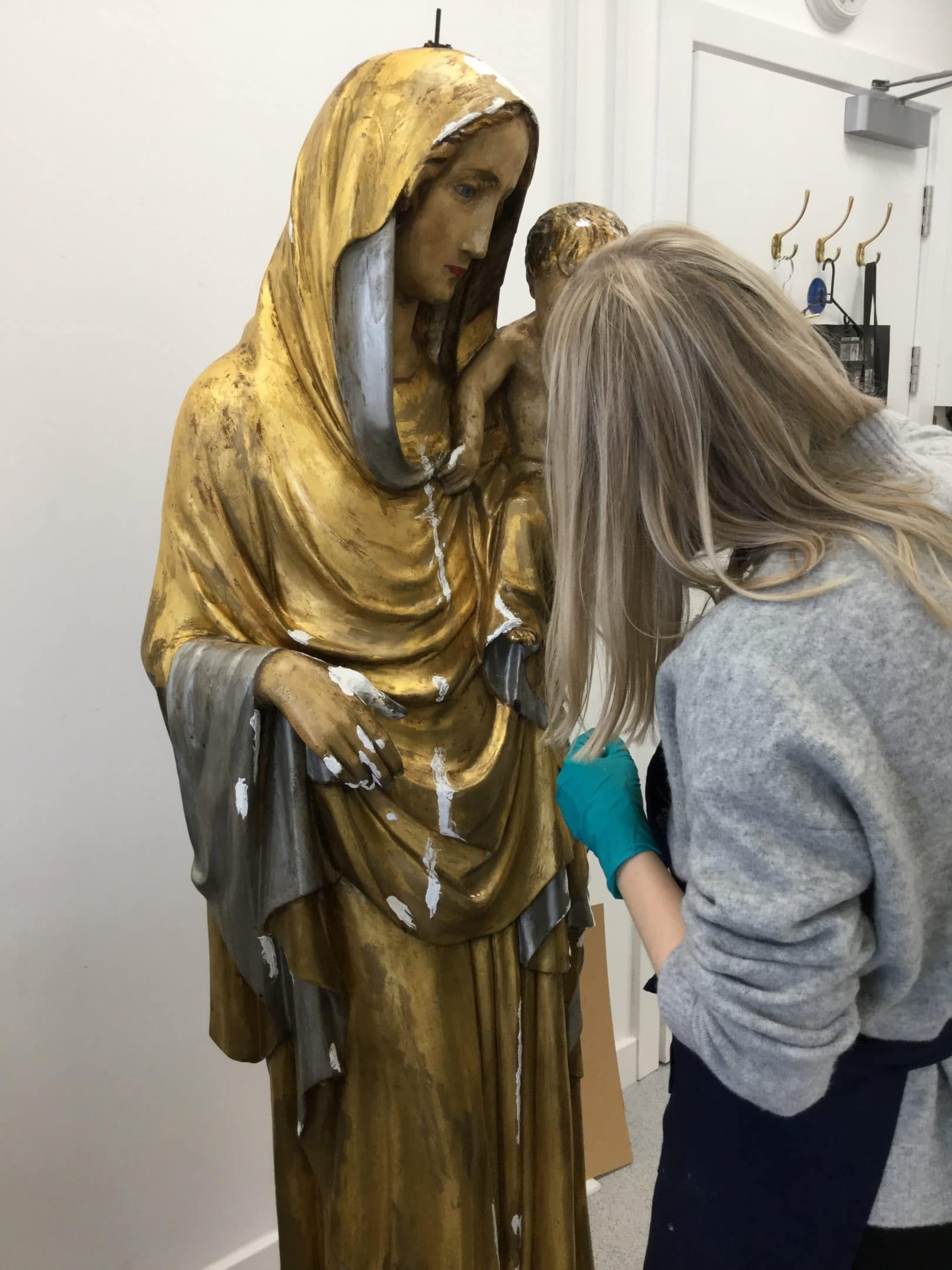
Decorative Arts Conservator Liisa Vesa working on the statue of Our Lady of Peace
Cleaning the Statue
The cleaning of Our Lady of Peace required a multi-layered approach. After an initial dry clean of all the pieces – the figure, crown, sceptre and sunburst – their surfaces were cleaned using 2.5% triammonium citrate in deionised water, a chelating agent used to remove surface dirt. The face and flesh of the figure were then cleaned with denatured alcohol, also known as IMS, to remove the varnish which coated them and had discoloured over time.
Regilding the Statue
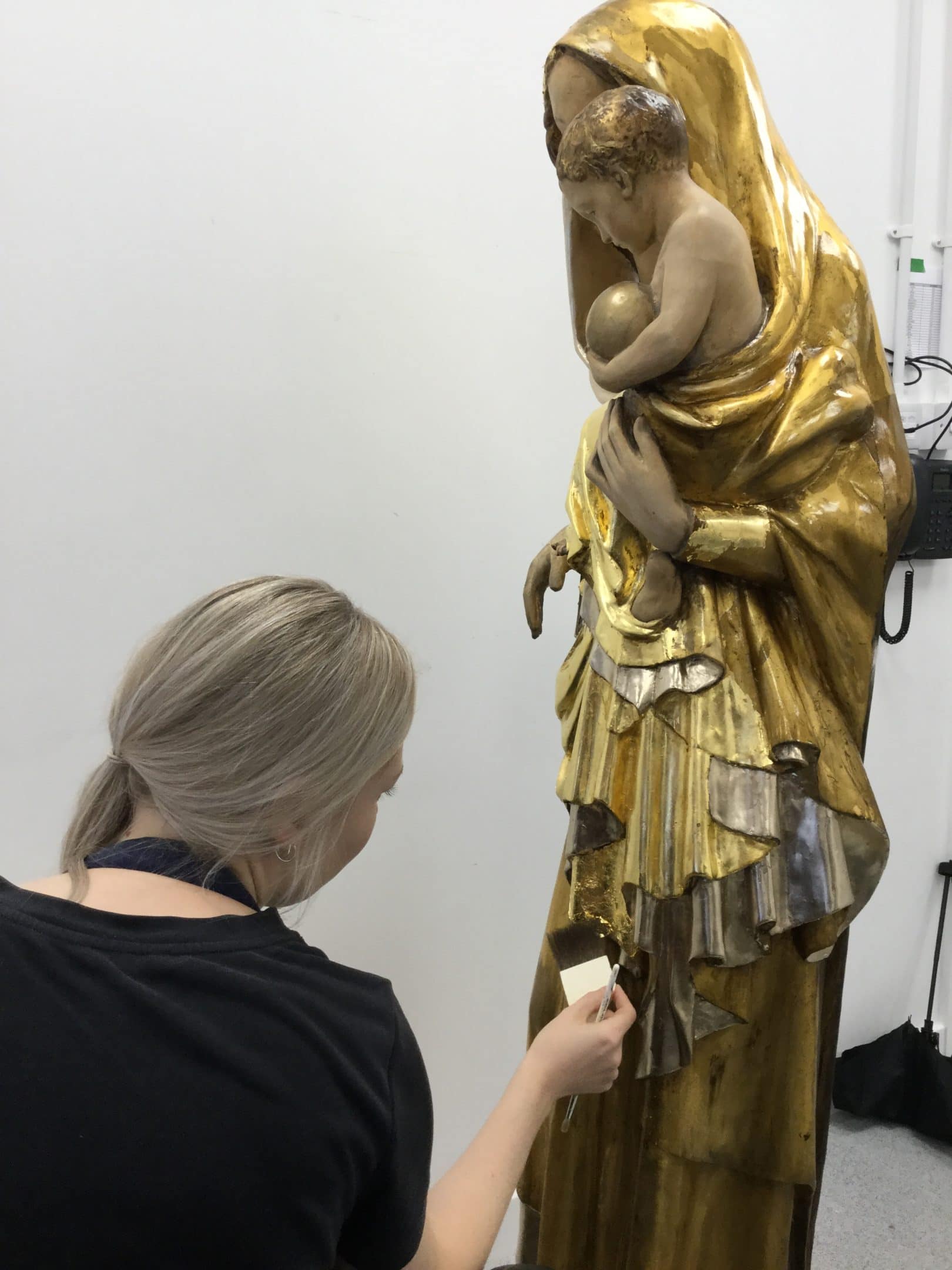
Liisa regilding the statue
The end result
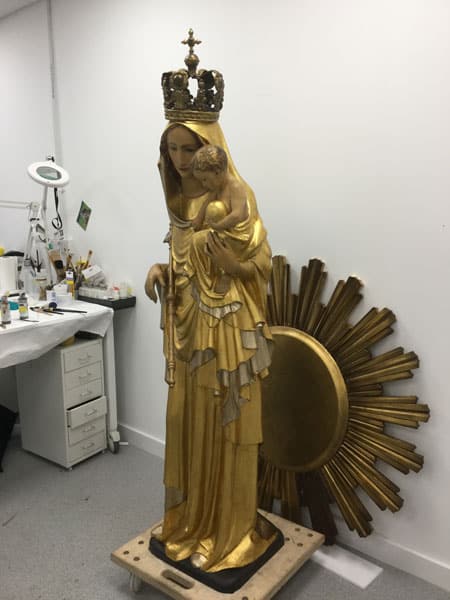
The restored and regilded statue in the Plowden & Smith Decorative Arts studio
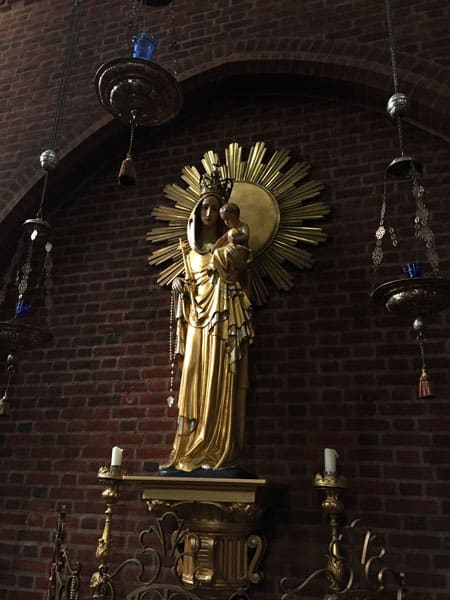
The restored statue of Our Lady of Peace following installation at St Mary’s Church, Belgravia

